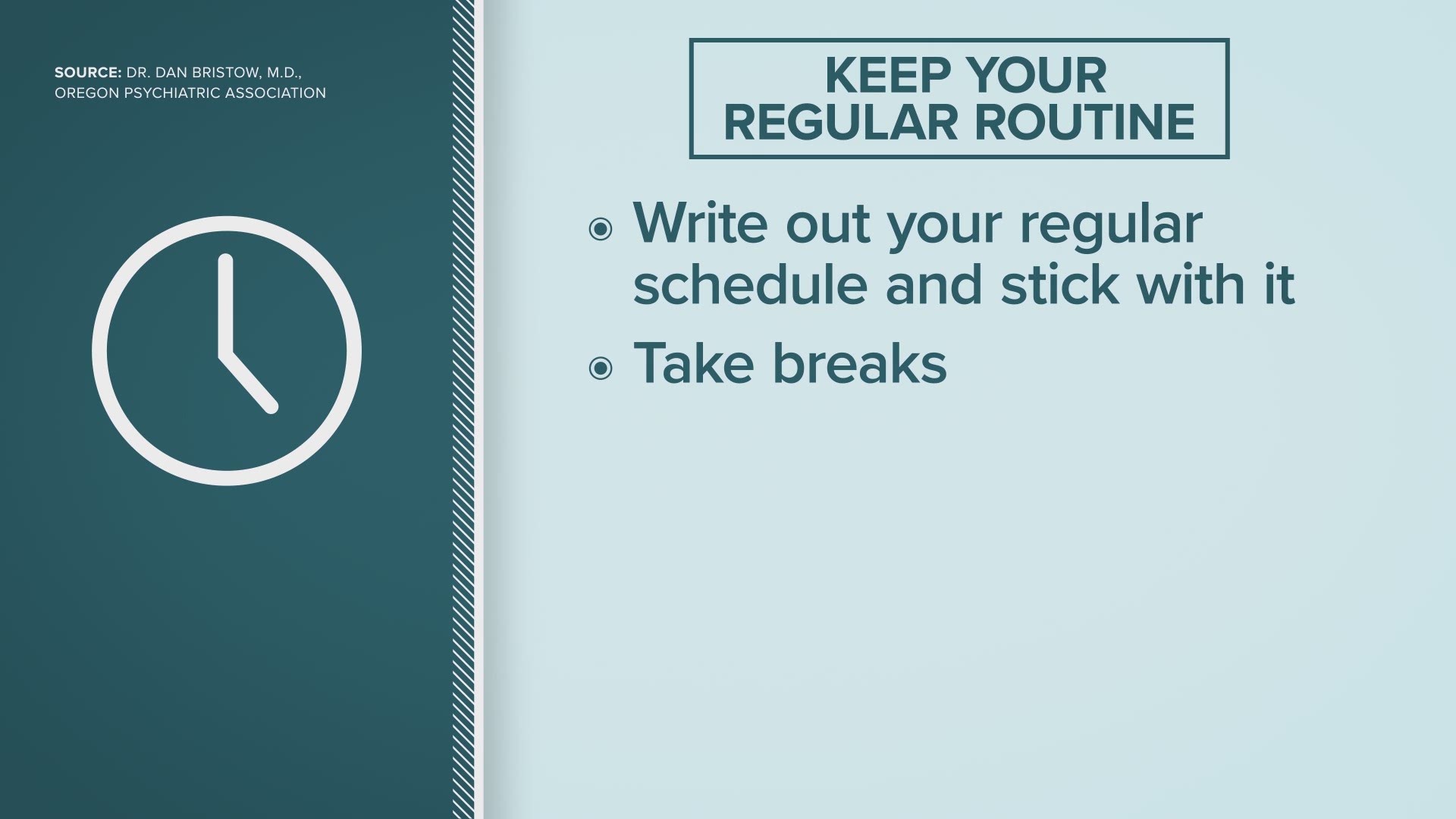SEATTLE — Social distancing seems to be making an impact in slowing the spread of the novel coronavirus (COVID-19) in Washington state. The number of new daily COVID-19 cases has started to decrease since Gov. Jay Inslee’s “Stay Home, Stay Healthy” order went into effect on March 23.
Data suggests that Washington state might be starting to “flatten the curve,” but it doesn’t mean we’re out of the woods quite yet.
While social distancing has helped slow the spread of the virus in the state there is currently no COVID-19 vaccine, which means most people are still susceptible to the virus.
A data-driven model from the University of Washington’s Institute for Health Metrics and Evaluation (IHME) shows we might be close or at the peak, but only if social distancing is continued through May.
“If we go back to business as usual, many people will be infected relatively quickly because COVID-19 remains circulating in the population,” Dr. Jeff Duchin, public health officer for Seattle and King County, explained in a blog post. “We remain at risk for a large outbreak that would overwhelm the healthcare system. That’s why the recent studies clearly state that we need to continue to stay strong with the Stay Home order for now.”
Dr. Duchin said a threat of a rebound in COVID-19 cases could “overwhelm the healthcare system” if we end social distancing too soon.
Over the weekend, Gov. Inslee tweeted an IHME graph showing the virus would return if we ended social distancing two weeks from now. Gov. Inslee’s stay-at-home order is currently in effect until May 4.
“You need to get down to a very low level of death that represents a very low level of transmission in the community before it is going to be practical to take away social distancing measures and count on contact tracing, mass screening, and quarantine of those [COVID-19] positives as a way to protect against a rebound, and/or a second wave [of infections],” said IHME Director Dr. Christopher Murray.
Before things can get “back to normal” and social distancing measures can start to be relaxed, Dr. Duchin said there would need to be a “steady decrease in the number of people getting sick and needing hospitalization for at least two weeks.” He also said rapid testing and reporting of results need to be increased to keep the number of cases at a manageable level, but “that is not yet available.”
Before guidelines could be relaxed, Dr. Duchin said public health agencies would also need to be able to do thorough case and contact investigations to identify people infected with the virus and their close contacts so they can be quarantined to limit the spread of the virus to others.
“This is the main thing that needs to happen to allow us to start resuming normal activities safely while avoiding a dangerous increase in new illnesses,” said Dr. Duchin. People will need to understand the critical importance of isolating themselves when ill and rapidly helping inform their close contacts so they can quarantine themselves away from others and be tested if necessary based on guidance from public health.”
On Sunday, the Washington State Department of Health (DOH) shared some of the “do’s and don’ts” of staying at home under the order.
The DOH said while it is OK to go for a walk around your neighborhood while practicing social distancing, people should avoid playgrounds and walking paths, adding, “if you need to drive to your walk, that is too far away.” It also reminded residents not to make unnecessary trips or buy more than you need so your neighbors can also have supplies at home.
You should also not have friends or family over during the stay-at-home order. Researchers at UW created a website using illustrations to show how harmful just having one friend over could be during a pandemic.
“Easing the social distancing rules so that each household could have contact with just one or two others would reconnect most households in a community, providing conduits through which the COVID-19 virus could spread,” researchers said.

